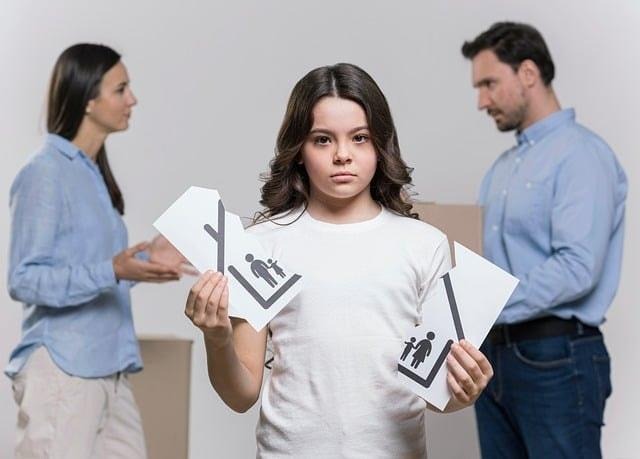Joint Custody in California: What It Really Means for Parents
Authored by Izzat H. Riaz – Californian Paralegal, U.K. Certified Lawyer (LL.M.)

When I talk to parents going through custody disputes, one of the first things I clarify is what joint custody actually means, and what it doesn’t. In California, joint custody isn’t a one-size-fits-all arrangement. It’s a flexible structure that lets both parents share responsibility for raising their child while protecting the child’s need for stability and security.
It’s not about “winning” or “losing” custody. It’s about ensuring that your child keeps meaningful, consistent relationships with both parents after separation or divorce, and that’s what California family law is built to protect.
Understanding Joint Custody in California
Under California law, joint custody refers to a shared arrangement where both parents take an active role in their child’s care, upbringing, and decision-making. The law distinguishes between joint legal custody and joint physical custody, and these can be combined or separated depending on the child’s best interests.
In my experience, many parents assume “joint custody” automatically means equal time. It doesn’t. Instead, it means shared responsibility, sometimes equally divided, sometimes weighted toward one parent, but always focused on what serves the child’s well-being.
Joint Legal Custody: Shared Decisions That Matter

What It Means
Joint legal custody gives both parents equal authority to make major life decisions for their child, things like school choice, medical care, religious participation, and extracurricular activities.
Even if the child lives primarily with one parent, both must communicate and collaborate on these major issues. Neither parent can make a unilateral decision about something significant without consulting the other.
How It Works in Real Life
In practice, this means communication is key, and conflict management is just as important. I’ve seen many parents succeed with joint legal custody because they use structured communication tools (like parenting apps or written agreements) and establish clear expectations early on.
When communication breaks down, courts often encourage mediation before taking legal action. A well-drafted parenting plan can prevent most disputes before they happen by outlining how major decisions will be made.
Joint Physical Custody: Where the Child Spends Time
Definition
Joint physical custody is about where the child lives and how time is divided between parents. It doesn’t have to be a perfect 50/50 split, the law focuses on giving the child frequent and continuing contact with both parents.
Parenting Schedules
There’s no universal schedule. Some parents alternate weeks; others use 2-2-5-5 or 3-4-4-3 rotations. Younger children may need shorter, more frequent visits, while older kids may thrive on longer blocks of time.
The right plan depends on work schedules, school locations, and, most importantly – what keeps the child’s daily life stable. I often tell parents that flexibility and consistency are not opposites; a good plan balances both.
Custody Combinations: Finding What Works
California judges can tailor custody orders to fit each family’s needs. Common arrangements include:
- Joint Legal Custody with Sole Physical Custody: Both parents share decision-making, but the child primarily lives with one parent.
- Joint Legal and Physical Custody: Parents share both decision-making and time; this is often the preferred outcome when cooperation is possible.
- Sole Legal Custody with Joint Physical Custody: One parent makes the big decisions, but both maintain significant time with the child.
Every case is different. What matters is not the title, but the stability and involvement it provides the child.
How California Courts Decide Custody
Judges use one guiding principle: the best interests of the child. That means every decision is made to protect the child’s safety, health, and emotional development, not to reward or punish either parent.
Factors Courts Consider
When determining custody, California judges evaluate:
- The child’s age, health, and emotional needs.
- Each parent’s history of caregiving and involvement.
- The stability of each home environment.
- Whether either parent has a history of domestic violence or substance abuse.
- Each parent’s ability to support the child’s relationship with the other parent.
- The child’s preference (if mature enough to express one).
In other words, judges look at actions, not accusations. Demonstrating consistent involvement, reliability, and respect for the co-parenting process goes much further than arguing who’s “better.”
Filing and Establishing Custody Orders
To create a custody order, one parent typically files a request through the family court. Parents are strongly encouraged, and often required, to attempt mediation before a judge makes any decision.
If both parents agree on a parenting plan, the court can approve it as a formal order. If they can’t, the judge will make a determination after reviewing evidence and testimony.
Once in place, a custody order stays effective until a substantial change in circumstances warrants modification, for example, relocation, new safety concerns, or major shifts in the child’s needs.
Parenting Plans: The Roadmap for Co-Parenting
A parenting plan is the backbone of successful joint custody. It spells out everything from parenting schedules to decision-making protocols, travel arrangements, and even communication guidelines.
I always advise parents to make these plans as specific as possible, ambiguity breeds conflict. A strong parenting plan should answer the “what ifs” before they turn into court filings.
Visitation and Parenting Time
Even when one parent has primary custody, the other almost always receives regular visitation rights unless there are safety issues. Typical orders include weekends, holidays, and vacations.
In cases involving concerns like abuse, addiction, or mental health instability, the court may order supervised visitation, allowing the child to maintain contact in a safe, controlled environment.
These arrangements are temporary when possible. The goal is always to protect the child while promoting eventual healthy, unsupervised contact if circumstances improve.
When and How to Modify Custody Orders
Life changes. Custody orders can, too, but not casually.
California courts require proof of a substantial change in circumstances before modifying a custody arrangement. That might include job relocation, health issues, or a child’s changing needs. The parent requesting modification must show that the change serves the child’s best interests, not just their own convenience.
When in doubt, talk to a family law professional before filing. Acting too quickly, or without evidence, can backfire.
In My Experience
I often tell clients that joint custody is more about mindset than math. It’s not about splitting days equally, it’s about showing your child that both parents are still there, consistent and committed.
The families who do best after separation are the ones who shift from competition to cooperation. When both parents communicate, respect boundaries, and stay focused on the child, court orders become guidelines, not battlegrounds.
Final Thoughts
Joint custody in California isn’t about dividing time; it’s about preserving relationships. The law is designed to keep both parents involved whenever it’s safe and healthy to do so.
If you’re navigating custody in California, don’t go it alone. Understand your rights, know your responsibilities, and create a plan that works for your child, not against your co-parent.
Because at the end of the day, the true goal of joint custody isn’t equality between parents. It’s stability for your child. And that’s something every parent can get behind.













